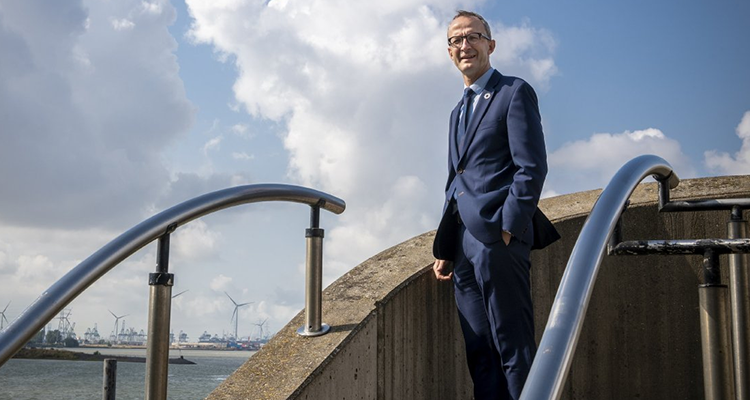
“Our efforts to support the green transition depend on our banking partners”

To say that DEME is a pioneer in the field of offshore wind power only tells half the story. In the last few decades, the group has invested both in giant ships that are used to build wind farms, and in the farms themselves. Today, it has almost 400 wind turbines operating off the coast of Belgium, producing 2.3 gigawatts of power, the equivalent of two nuclear plants and enough to cover the electricity needs of half of Belgium’s homes.
Leading the way in hydrogen
DEME now wants to extend its pioneering role into hydrogen, the fuel of the future. Luc Vandenbulcke explains: “It’s easy to produce using electrolysis, splitting water molecules into hydrogen and oxygen using electricity. If you use green electricity to do that, you get a totally fossil-free source of energy that is easy to transport and store using existing gas infrastructure. And if you react hydrogen with other molecules, you can produce green fuels and other basic materials.”
DEME is also backing offshore hydrogen production. “This is attractive in areas where direct demand for energy is low, such as coastal areas and remote islands. We’re also likely to target areas where there’s a lot of wind and sun, like Oman, where we convert hydrogen into methanol and ammonia, which we transport to the West by boat. Because the Middle East offers excellent conditions in terms of sun and wind, production costs are low and this offsets the high transportation costs.”
“Compared with oil, green hydrogen is a financially intensive product. You need a lot more technology to produce it, and without subsidies you won’t find any customers. The business model is much more complex, and banks must play their part within it. We rely on project finance provided by our partners, and BNP Paribas Fortis in particular. We’re always talking to the Sustainable Business Competence Centre, which provides a good sounding board. We’re lucky because we can rely on our shared experience in offshore wind power.”